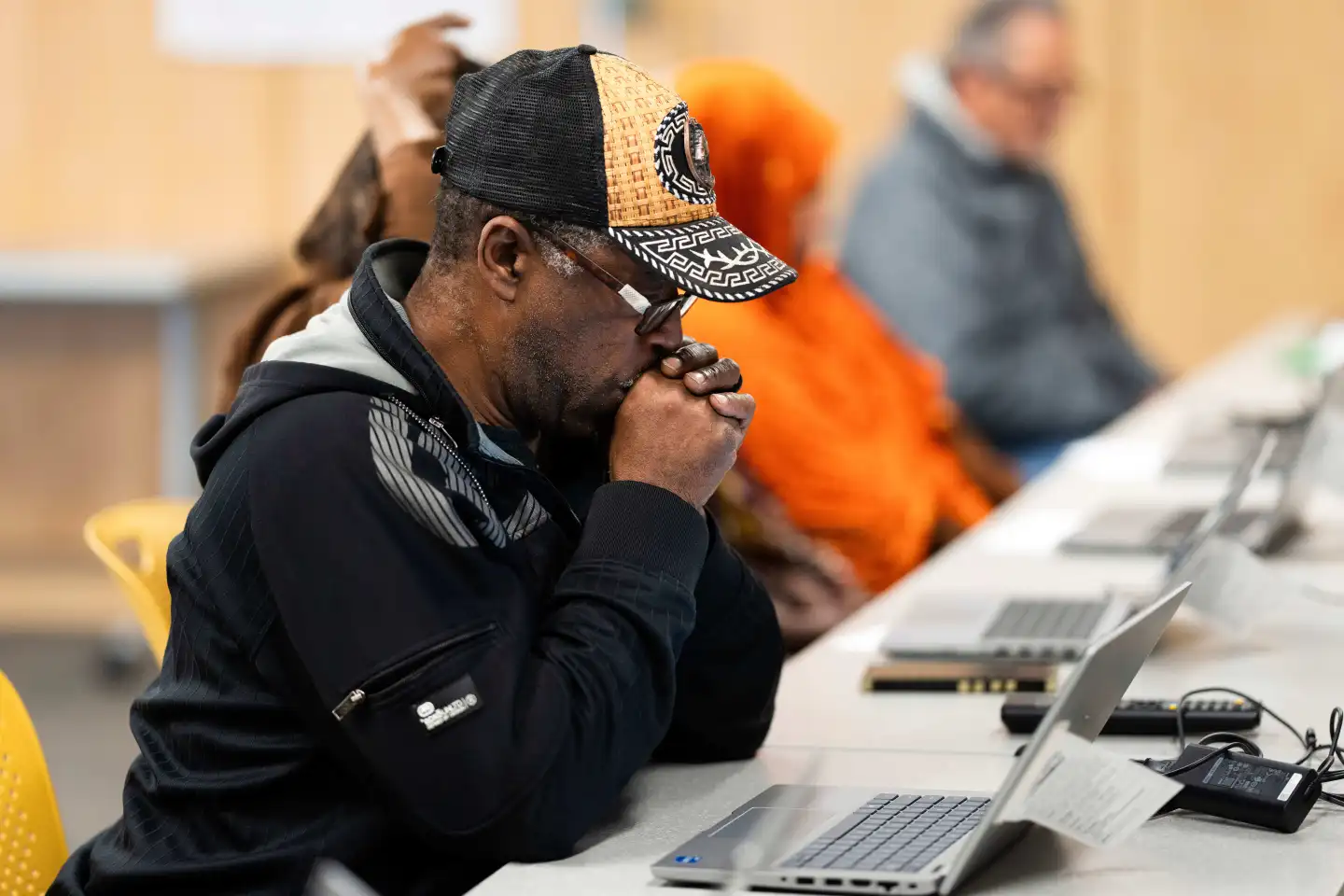One program gives laptops to people in rural Iowa. Another helped people get connected again after Hurricane Helene destroyed phones and computers in western North Carolina. Programs in Oregon and rural Alabama teach older adults, including some who’ve never used a computer, how to use technology in a digital age.
That progress was put at risk this month when former President Donald Trump, on his platform Truth Social, said he wants to end the Digital Equity Act. This federal grant program was created to help close the technology gap. Trump called the program “RACIST and ILLEGAL” and referred to it as a “woke handout based on race.” He claimed it was an “ILLEGAL \$2.5 BILLION DOLLAR giveaway,” although the actual amount set aside for the program was \$2.75 billion.
When Congress approved it in 2021, the program name didn’t raise alarms. It was part of a \$65 billion internet expansion effort included in the \$1 trillion infrastructure law supported by President Joe Biden’s administration.
The Digital Equity Act was created to address the gaps that became clear during the broadband expansion. It gave states and tribes the ability to bring internet to families who couldn’t afford it, provide computers to children, give seniors access to online healthcare, and offer training and job skills to veterans.
It’s still not clear whether Trump has the legal power to cancel the program. For now, his administration can choose not to spend the money.
“I just felt my heart break for what we were finally, finally in this country, going to address, the digital divide,” said Angela Siefer, head of the National Digital Inclusion Alliance. Her group was awarded a \$25.7 million grant to work with other organizations nationwide, but they haven’t received the funds yet. “The digital divide is not just physical access to the internet, it is being able to use that to do what you need to do.”
The word “equity” may have drawn Trump’s attention. His administration has been removing programs that include diversity, equity, or inclusion. But this law was meant to be broader than that.
Although Trump said it was about race, the terms “race” and “racial” appear only twice in the law. Once, they appear in a part that says no group should be excluded from funding. The other time is in a list of people the law aims to help, which includes older adults, veterans, people with disabilities, English learners, those with low reading levels, and people in rural areas.

“Digital Equity passed with overwhelming bipartisan support,” said Sen. Patty Murray, a Democrat from Washington and a key backer of the act. “And that’s because my Republican colleagues have heard the same stories as I have — like kids in rural communities forced to drive to McDonald’s parking lots for Wi-Fi to do their homework.
“It is insane — absolutely nuts — that Trump is blocking resources to help make sure kids in rural school districts can get hot spots or laptops, all because he doesn’t like the word equity!”
The agency in charge of the program, the National Telecommunications and Information Administration, did not comment. It’s unclear how much of the \$2.75 billion has been awarded, though in March of last year, \$811 million was allocated to states, territories, and tribes.
In Portland, Oregon, Brandon Dorn recently joined a keyboard basics class from Free Geek, a nonprofit that offers free courses to help people learn computer skills. The class was held at a low-income housing center so that residents could attend easily.
Dorn and others were given laptops and taught how to use keys like control, shift, and caps lock, and how to copy and paste. They played a typing game to help learn finger placement using a color-coded keyboard.
Dorn, 63, said these classes were helpful because “in this day and age, everything has to go through the computer.” He said he now feels more confident and doesn’t need to rely on his children or grandchildren for tasks like scheduling appointments online.
“Folks my age, we didn’t get this luxury because we were too busy working, raising the family,” he said. “So this is a great way to help us help ourselves.”
Free Geek’s director Juan Muro said the classes give people the skills and tools to do things like apply for jobs, use online education, manage bank accounts, and get medical care remotely. He said Trump’s decision to cut funding has made it harder for groups like Free Geek to operate, and now they have to rely on fundraising to provide people with basic needs.
Sara Nichols works for Land of Sky Regional Council in western North Carolina, a planning group that covers several counties. Just before Trump’s inauguration in January, her group was told it had been approved for a grant. But like others contacted by The Associated Press, they haven’t received any money.
Land of Sky had been working to help storm victims. Nichols said the award notice brought “incredible news.”
“But between this and the state losing, getting their letters terminated, we feel just like stuck. What are we going to do? How are we going to move forward? How are we going to let our communities continue to fall behind?”
More than 20% of Americans don’t have broadband at home, according to the Pew Research Center. In rural areas, the number rises to 27%.

Besides internet and devices, many programs funded by the act provide “digital navigators” — people who help others learn how to use online tools.
“In the United States we do not have a consistent source of funding to help individuals get online, understand how to be safe online and how to use that technology to accomplish all the things that are required now as part of life that are online,” said Siefer.
This includes helping families get internet hot spots and teaching older adults how to avoid online scams.
“Health, workforce, education, jobs, everything, right?” Siefer said. “This law was going to be the start for the U.S. to figure out this issue. It’s a new issue in the big scheme of things, because now technology is no longer a nice-to-have. You have to have the internet and you have to know how to use the technology just to survive, let alone to thrive today.”
Siefer said the word “equity” in the name likely caused Trump to target the program.
“But it means that he didn’t actually look at what this program does,” she said. “Because who doesn’t want grandma to be safe online? Who doesn’t want a veteran to be able to talk to their doctor rather than get in a car and drive two hours? Who doesn’t want students to be able to do their homework?”


